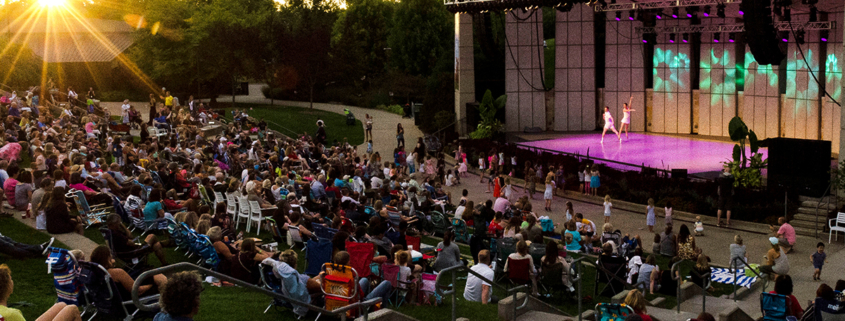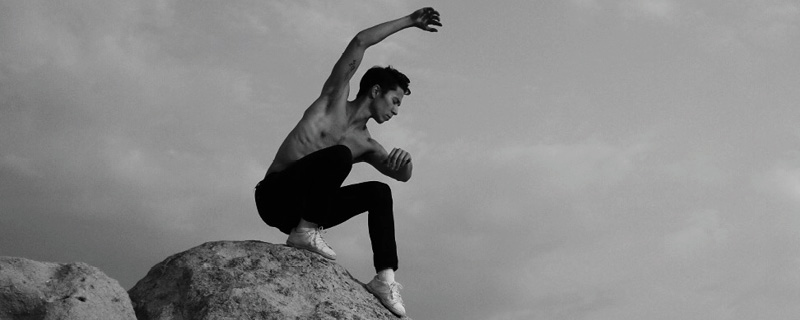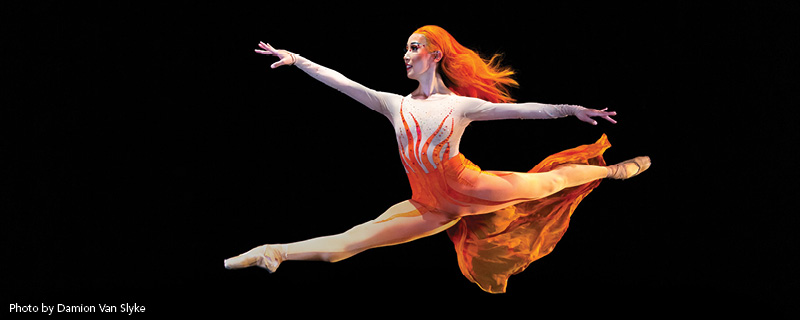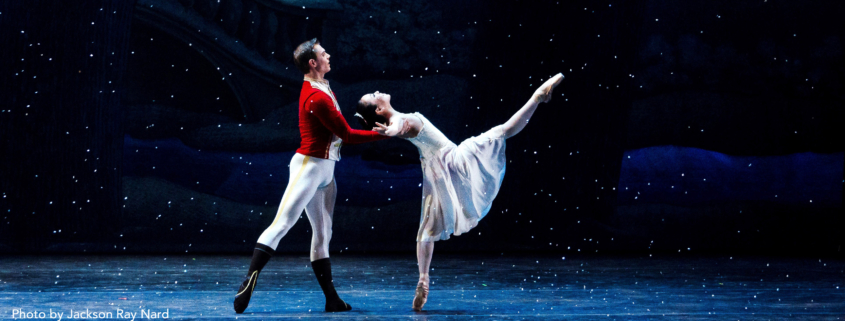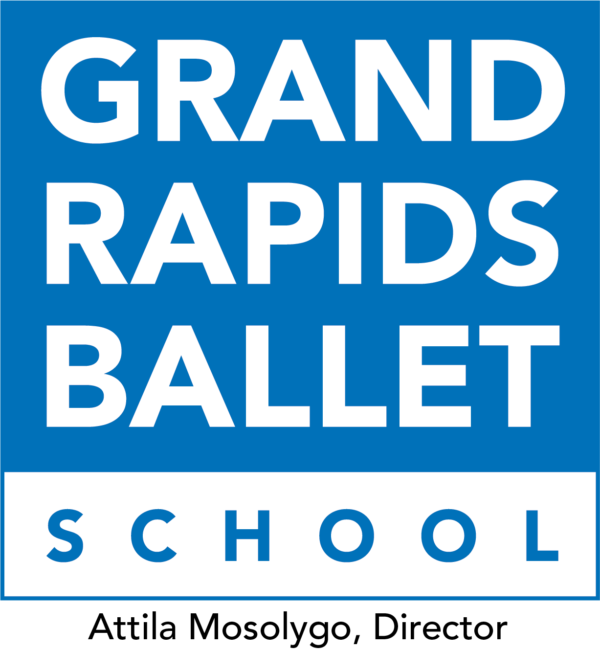Grand Rapids Ballet continues our Behind the Curtain series, celebrating our dancers from within Asian American and Pacific Islander communities in recognition of AANHPI Heritage Month, which takes place annually throughout May.
Today, meet Company dancer, Isaac Aoki, who was born and raised in Salt Lake City, Utah. Aoki joined Grand Rapids Ballet in 2013 after studying at prestigious ballet companies across the country including The School of American Ballet, Kaatsbaan Ballet, Pacific Northwest Ballet, Ellison Ballet, and Miami City Ballet School, to name a few.

Isaac with his older brother, Nicholas.
From an early age, Aoki was inspired to move after watching his older brother, Nicholas, during his Taekwondo classes. “I would run around kind of dancing in the mirrors,” he reflected. It was then, his mother decided to sign him up for dance classes at a neighborhood studio, and then later at Ballet West Academy. In his early years, Isaac studied all forms of movement, from jazz to tap, even exploring musical theater.
It wasn’t until he attended a performance of The Nutcracker at age 11 that Isaac started focusing on ballet. “I remember the first time seeing The Nutcracker and just really recognizing how beautiful it was and how interested I was in that,” he shared. He reflected on the experience, noting that his favorite character was the Sugar Plum Fairy. “It was one of the most beautiful things.”
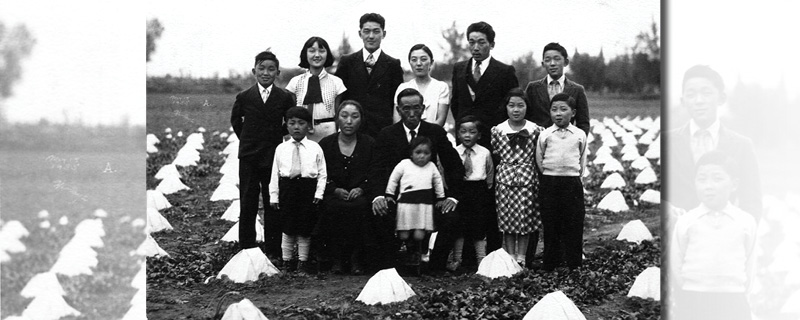
Isaac’s great grandparents with their children on their farm in Utah.
From that point forward, Isaac began more intense training at Salt Lake Ballet Conservatory. As he progressed, he also moved to attend more advanced institutes such as studying at The University of Utah in its Ballet Department alongside Conrad Ludlow and Mikhail Tchoupakov, and at the Kirov Academy of Ballet in Washington DC with Nikolai Kabaniaev.
He attributes his work ethic, especially as it relates to the physicality of ballet, to his family. “With something like ballet, you will never perfect it,” said Aoki. “You will always strive for more, and on my dad’s side, the Japanese-American side, they’re very athletic. I’m very inspired by them. Just the physical aspect to always just keep pushing, and then as a person as well.”
Aoki’s background, being from a multi-racial family, has impacted his life in countless ways. Though he said with a laugh, it’s all he’s ever known. “I’m from kind of a non-traditional family,” he said. “My brother is adopted, and my dad is sansei Japanese-American, which is the third generation. So, my dad’s grandparents came from Japan, and then my mom is white.”
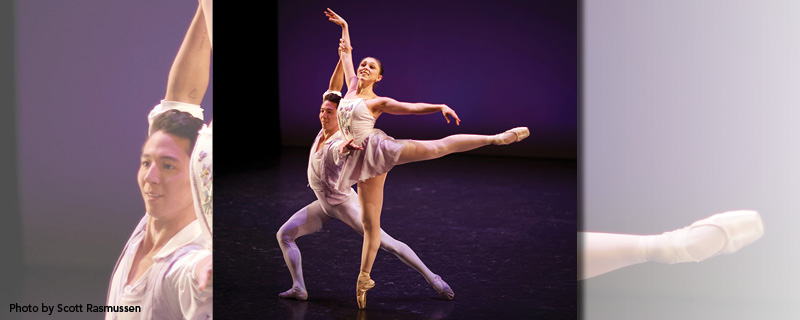
Isaac Aoki and Madison Massara in Mozart Symphony, choreographed by James Sofranko, photo by Scott Rasmussen.
In addition to his talents on stage, Isaac also is a gifted photographer, which has provided another lens to celebrate his family’s culture. Growing up, Isaac looked up to his father, watching him grow his career as a professional cinematographer. Following in his father’s footsteps, at 15-years-old, Isaac was gifted his first digital camera by his father and it’s been a passion of his ever since.
In 2017, Isaac captured a moving photographic series, titled “Topaz,” featuring several family members who were born in the Japanese Internment camp Topaz during World War II. The photographs were taken in the desert mountains outside of Topaz. “I wanted to do a photo project that was in homage to those family members,” he shared.
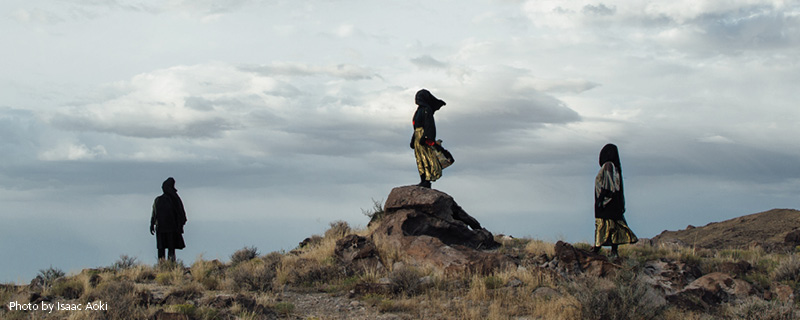
His photographic talents were brought into focus at Grand Rapids Ballet during the 2020-21 Season program, Jumpstart: on Film where he choreographed a dance film titled, “at first sight.” A year in the making, his work turned also into a family project. “My dad drove from Salt Lake City to Michigan and we had a five-day camping trip where I invited dancers to come up to film the section that was on the sand dunes,” he reflected. “So that was a really special thing to work on with my dad through Covid.”
His work, “at first sight,” featured 13 dancers, including company members and apprentices and trainees, with music by Daniel Avery and Alessandro Cortini.

“I had heard about Isaac even before I came to Grand Rapids, said James Sofranko, artistic director at Grand Rapids Ballet. “Our Resident Choreographer Penny Saunders had tapped him to make a promotional video of one of her works, and I knew he had won a prize for his photography in Art Prize. I was excited to meet this multi-talented individual and am glad he has continued to grow in his artistry as a dancer, but also through his provocative and original choreography and filmmaking for our annual Jumpstart program.”
Aoki explained that he enjoys photographing dance as a professional ballet dancer because he understands the technicalities of ballet. “It’s very hard to capture a photo that is compelling to a normal person and a dancer,” he said. “Photography is a nice combination of dance, film, and how I see human bodies.”
Asian American and Pacific Islander Heritage Month takes place every year in May to recognize the contributions and influence of Asian Americans and Pacific Islander Americans to the history, culture, and achievements of the United States.
Author: Jessica Meldrum
In recognition of Asian American and Pacific Islander Heritage Month (AANHPI), Grand Rapids Ballet continues to celebrate our dancers from within AANHPI communities.
Company dancer Yuka Oba-Muschiana, who has been with Grand Rapids Ballet for 10 seasons, shared a glimpse into her background growing up and what moved her to begin a professional career in ballet. She comes from a hard-working family, her father worked in the construction industry building homes in her hometown of Fukushima, Japan while her mother also stayed on her toes, raising two daughters, both with big ambitions. Yuka, spent many hours of her young life honing her skills on-stage, and her sister, Marina, aspired to become a Geisha; both sisters accomplishing their hefty goals.

Oba-Muschiana shared that from an early age, her parents instilled a strong work ethic within her. She did not originally set out to become a professional ballerina but was always drawn to becoming an artist of some kind. “I always saw that as so cool,” she shared. “I wanted to spend my life doing something I love.” Her mother signed her up for her first-ever ballet lesson at age six so she could begin exercising and learning how to care for her body. She transitioned to more advanced training a few years later, around age 10. “I started a little later in life than other dancers,” she laughed.
Furthering her training, Yuka began participating in competitions across Japan, knowing that ultimately, she would have to leave her country to secure a job in the future. In 2006, she began that transition, moving to the United Kingdom to study at the English National Ballet School. Reflecting on this time, she recalls traveling to the UK for the audition and being awed by the city’s beauty. “It was like everything came out of a movie,” she said.
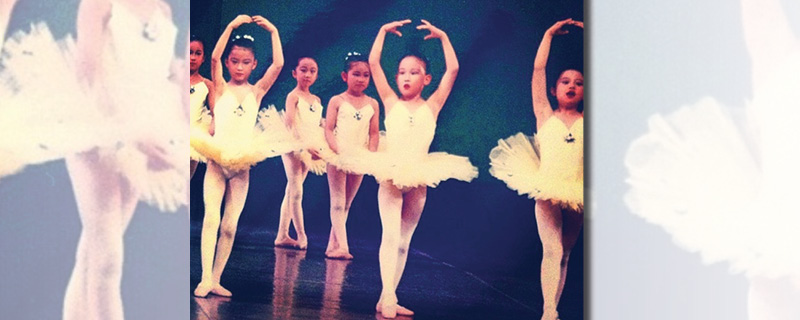
The scenery wasn’t the only thing that she recalls vividly, there also was a culture shock that she had to adjust to in moving to another country and being exposed to a new language. She studied English in high school but experiencing it in person was a different experience. Communication aside, another jarring experience was adjusting to the food. “One of the hardest things I had to get used to was the food,” she said. “I never cooked for myself in Japan, so that was all new.”
Upon graduating from the English National Ballet School, Yuka was invited to join the Slovak National Ballet in Bratislava, Slovakia. During that time, Oba-Muschiana performed a variety of classical and contemporary ballets, ultimately leading her to receive an offer from Patricia Barker, former Grand Rapids Ballet artistic director, to move to the United States to join the company. Due to unforeseen circumstances obtaining employment authorization, she had to wait one year before moving to the US.

During that time, she moved back home to Japan where she trained intensely and prepared for another international move. Oba-Muschiana shared that she was more prepared to move this time around with years of travel under her belt and having already lived in other countries. What she was not prepared for upon her arrival in the states was readjusting to an American accent versus the British accent she grew accustomed to while living in the UK. “I practiced my accent at home with my roommates,” she laughed.
That type of support, in addition to the support of other company dancers, helped ease the transition further. “I immediately felt like the company was my second home because I saw everyone at the company almost daily, and we worked really closely and we support each other so much,” she shared.
During her 10 seasons with Grand Rapids Ballet, Yuka has performed a variety of principal roles and has graced the stage as a soloist and within the corps de ballet. Among her favorite roles, she enjoyed dancing Aurora from “Sleeping Beauty.” “That was my dream, so it was a big moment for me,” she said. She also has stretched her creative muscles further, choreographing ballets for Jumpstart. One of her favorite choreographic works, “Eriha,” was inspired by her sister’s story of becoming a Geisha.
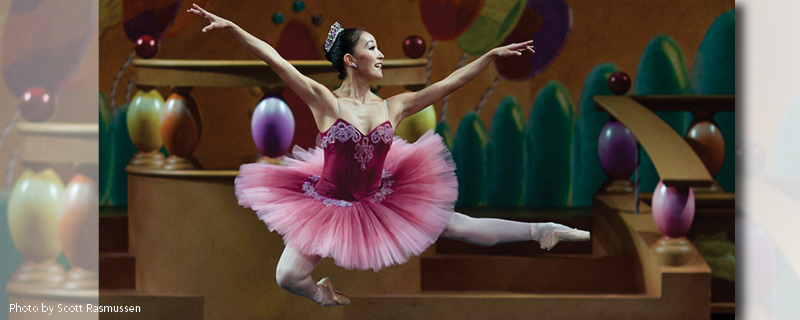
Drawing further from her family’s work ethic, she shared that her attention to detail and ability to work hard has always helped her onstage. “We are here to make a magical moment on the stage,” she explained. “We are here for you to escape and we work very hard to the moment.”
And her hard work and dedication are apparent. “Yuka is one of those dancers who can really do it all,” said James Sofranko, artistic director at Grand Rapids Ballet. “For instance, she can easily shift between the Sugar Plum Fairy in ‘The Nutcracker,’ the lead role in Alejandro Cerrudo’s contemporary ‘Extremely Close,’ and Danielle Rowe’s emotional duet ‘For Pixie.’”
Adding to her ability to transition between roles, Yuka shared that she loves dancing any Balanchine works, portraying classical ballets, while also extending into contemporary works like “Extremely Close.” Whichever ballet she is working on, Yuka shared that her ultimate goal is to give everything to that moment, and doing so makes her feel alive.
“I know that Yuka will give each role 100% effort, putting attention into every detail, character, phrasing, and expression,” said Sofranko. “When we found ourselves down a dancer for the filming of our ‘Nutcracker Experience,’ Yuka jumped into the corps de ballet role in Waltz of the Flowers without hesitation and saved the day with a smile on her face.”
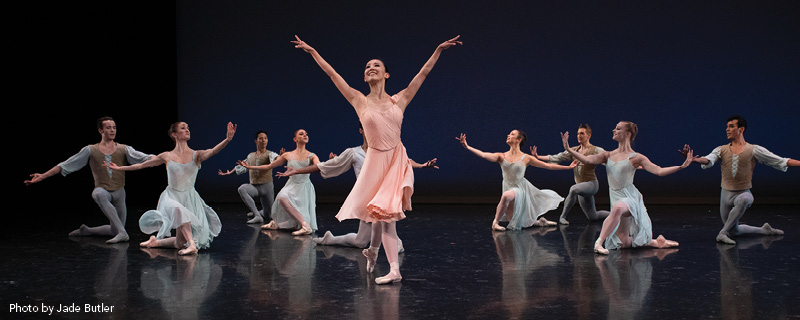
Looking ahead to the upcoming season, Oba-Muschiana shared her excitement to return to performing for a live audience. “We train our whole lives for so many hours and we only show the audience a few minutes,” she explained. “We bloom on stage for such a short time, and I focus on how I can make them smile. It’s always about the audience, so please come see us,” she exclaimed.
Asian American and Pacific Islander Heritage Month takes place annually throughout May and aims to recognize the contributions and influence of Asian Americans and Pacific Islander Americans to the history, culture, and achievements of the United States.

Author: Jessica Meldrum
In recognition of Asian American and Pacific Islander Heritage Month (AANHPI), Grand Rapids Ballet celebrates our dancers from within AANHPI communities.
Born and raised in Gunma, Japan, Yuko Horisawa joined Grand Rapids Ballet as a company dancer in September 2019. As she prepares for her third season, she looks back at her journey adjusting to life in the United States, reflecting on her experience moving away from Japan at an early age, taking a brief hiatus from ballet, and ultimately following her passion for performing, leading her back to ballet where she graces our stages here in West Michigan.
Horisawa began her training at age three with the Reiko Yamamoto Ballet School in Japan. Her early training built on musicality and ballet fundamentals until she transitioned to more serious training when she was 10 years old. She later left her home country at age 17 when she moved to Germany to study at the John Cranko School in Stuttgart. While there, she studied ballet while also completing her academic studies. It was a stark contrast to the training she was used to receiving back home. “In Japan, I was more expressive on the stage and really danced,” she shared. The transition was difficult for Horisawa as she balanced her passion for classical ballet and completing her academic pursuits.

After completing her education at the John Cranko School, she moved back to Japan where she decided to put a pause on her dance career. “Ballet life was really strict, and I was working hard,” she explained. After rigorous training, both with ballet and academics, Horisawa was looking for more opportunities to spend time with family and friends. “I wanted to be an ordinary girl and do normal things,” she said with a laugh.
During those two years away from ballet, she was invited to attend performances, and over time she started to dance again, little by little, and by age 24, she was ready for a full return. She began auditioning at companies across the globe, understanding that, for her, the most likely path was accepting a job outside of her country.
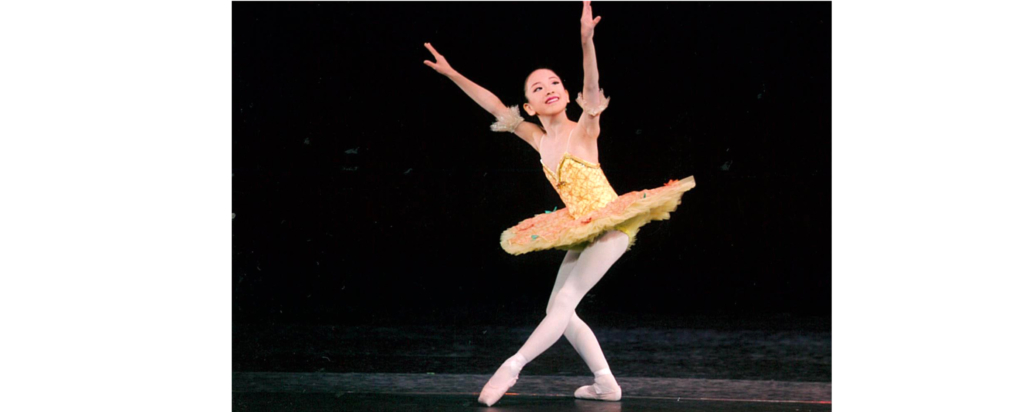
“It’s difficult to get a job on the other side of the world, in a different country,” she said. “Many people cannot get in a job in another country, especially in the US, it’s difficult to do.” She was elated to receive a text from James Sofranko, artistic director at Grand Rapids Ballet, offering her a position at the company. “Thank you, James!” she exclaimed.
Adjusting to life in the United States presented a new round of challenges as she became attuned to life in Michigan. “I was used to taking trains everywhere, and there are no trains here,” she said. “I didn’t even have a car!” In addition to the logistic issues she was working through, she shared that it was intimidating adapting to the language. While she studied English in school and spoke it while living in Germany, it was a very different experience acclimating to the nuances of language here.

“When Yuko first came to Michigan from Japan, she did not speak a lot of English, so we had to communicate mainly through dance,” said Artistic Director James Sofranko. “Dance is our common language and it’s amazing how you can actually get to know someone through dance, almost better than by conversing.”
Communicating through movement is key for Horisawa as she takes on roles and personas in various works at the ballet. “I wish people knew that I am a very sensitive person through my dance, more than appearances make you believe,” she shared. “I express myself more naturally in front of an audience and wish they could see my personality.”
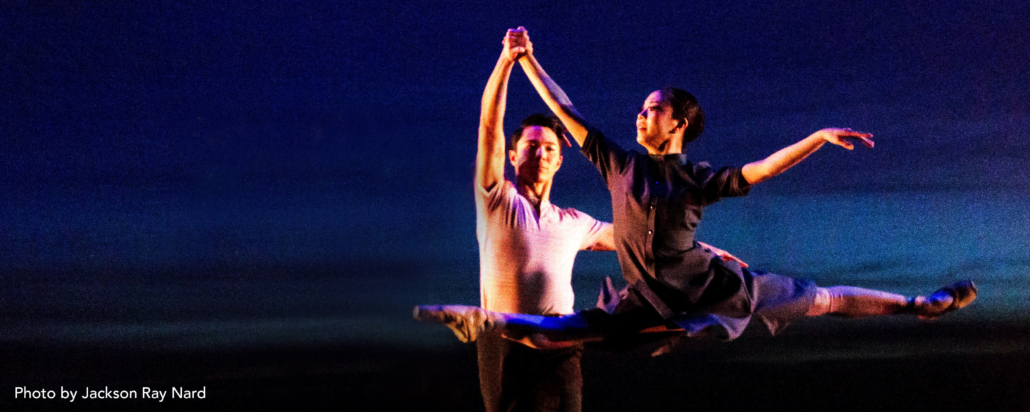
During her past two seasons with Grand Rapids Ballet, she has performed in a variety of works, including Romeo and Juliet Pas de Deux, A Dreamer, and The Nutcracker, among others. Reflecting on her time here, she said that joining Nutcracker in 2019 was the most difficult. “I had little experience dancing in a company,” she said. With more time under her belt now, and many after dancing many roles, Horisawa shared her favorite role so far was dancing “dream” Clara in the Nutcracker, journeying through the Land of the Sweets.
“Yuko has a small frame, but a large presence and she may surprise you with the pyrotechnics that can come out of her on stage,” said Sofranko. “I’m glad that she has chosen to make Grand Rapids Ballet her home.”
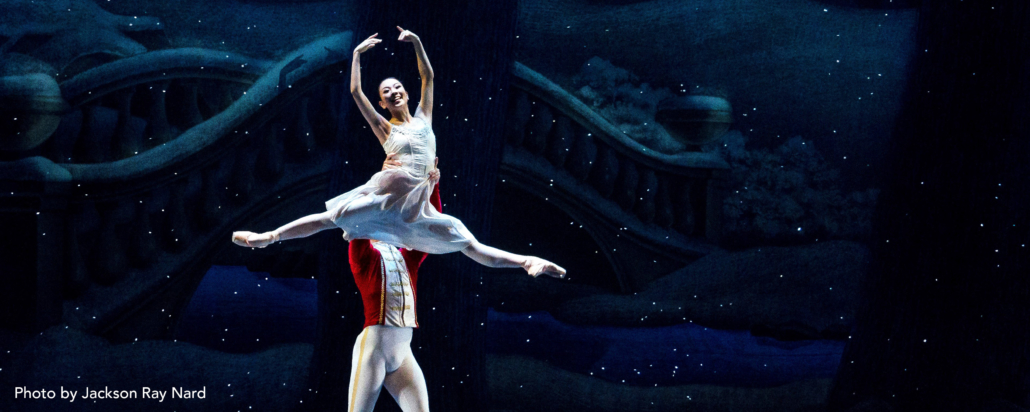
In preparation for the 2021-22 season in August, she is taking well-deserved time off, traveling back to Japan for the summer where she looks forward to spending time with friends and family, playing with her cats, Eren and Mina, and eating plenty of Japanese food.
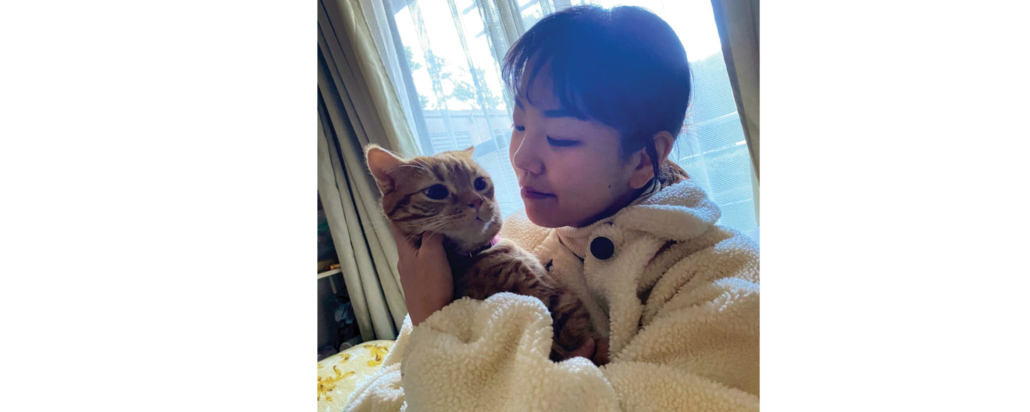
Asian American and Pacific Islander Heritage Month takes place annually throughout May and aims to recognize the contributions and influence of Asian Americans and Pacific Islander Americans to the history, culture, and achievements of the United States.
Author: Jessica Meldrum
- Call us at 616-454-4771
- 341 Ellsworth Avenue SW
Grand Rapids, MI 49503


